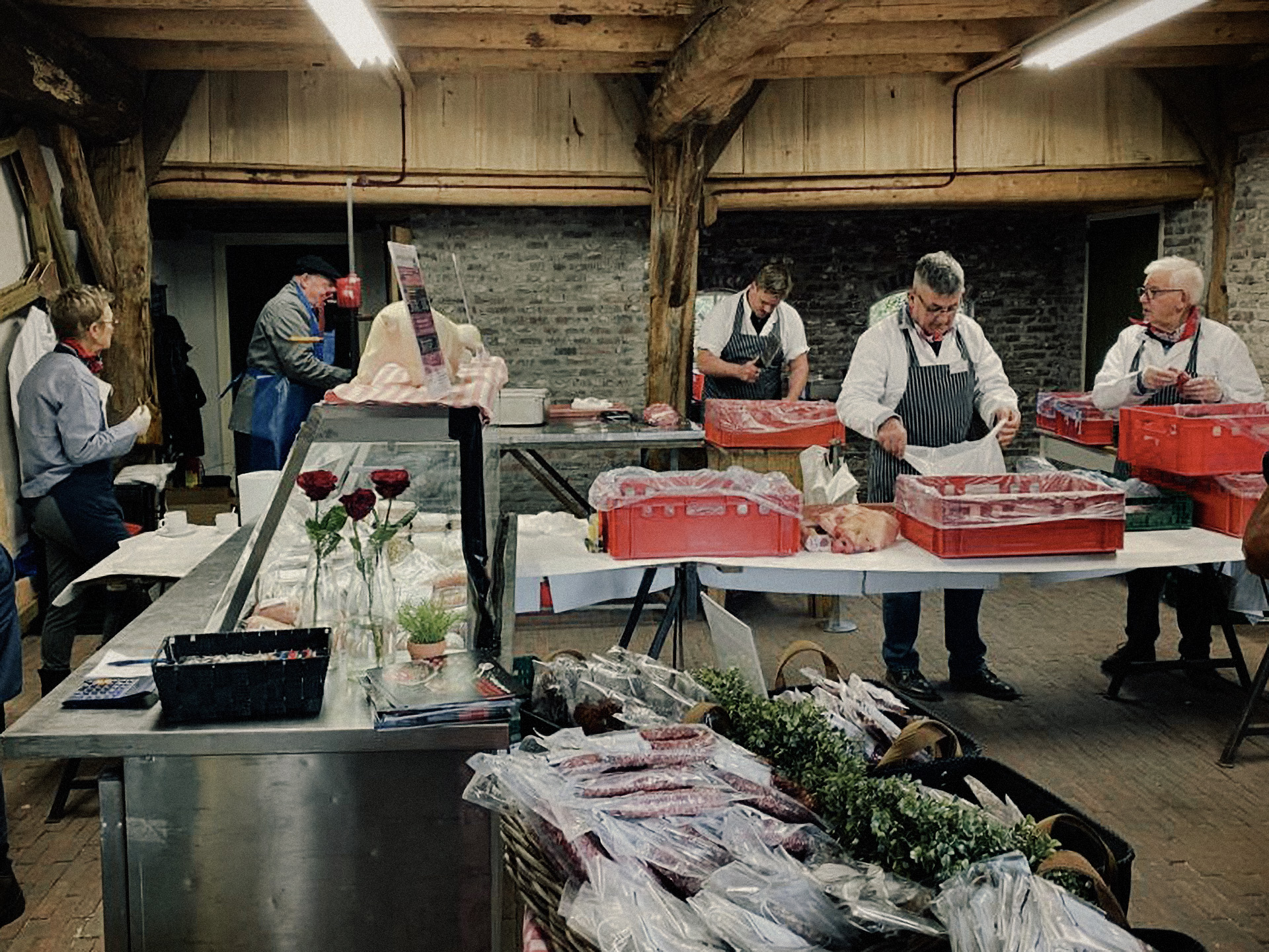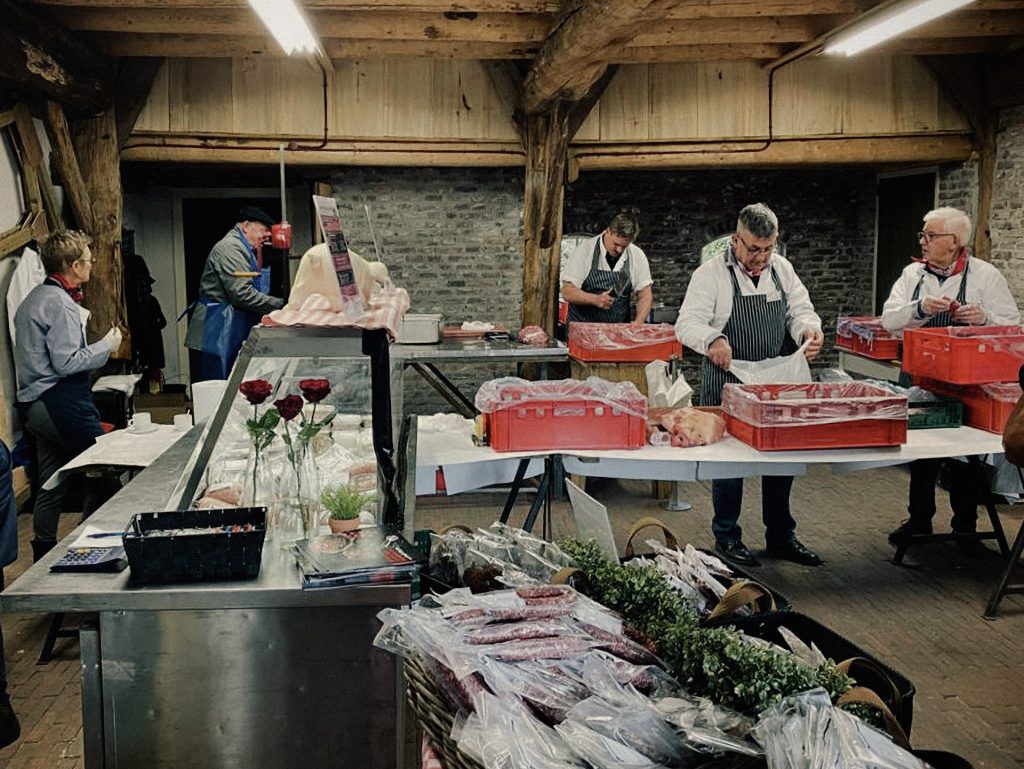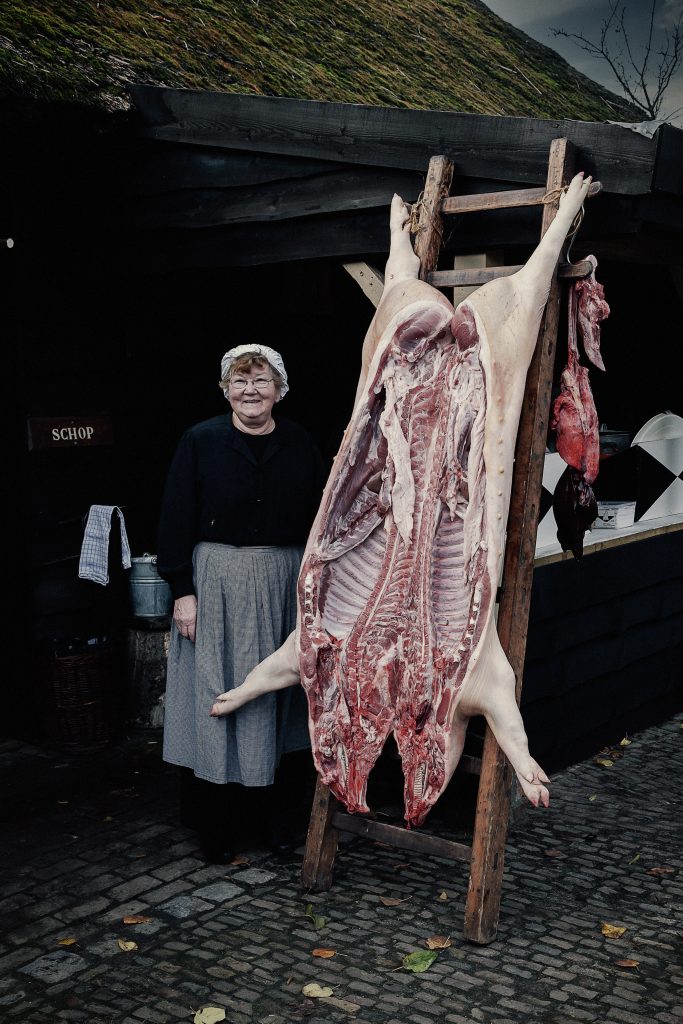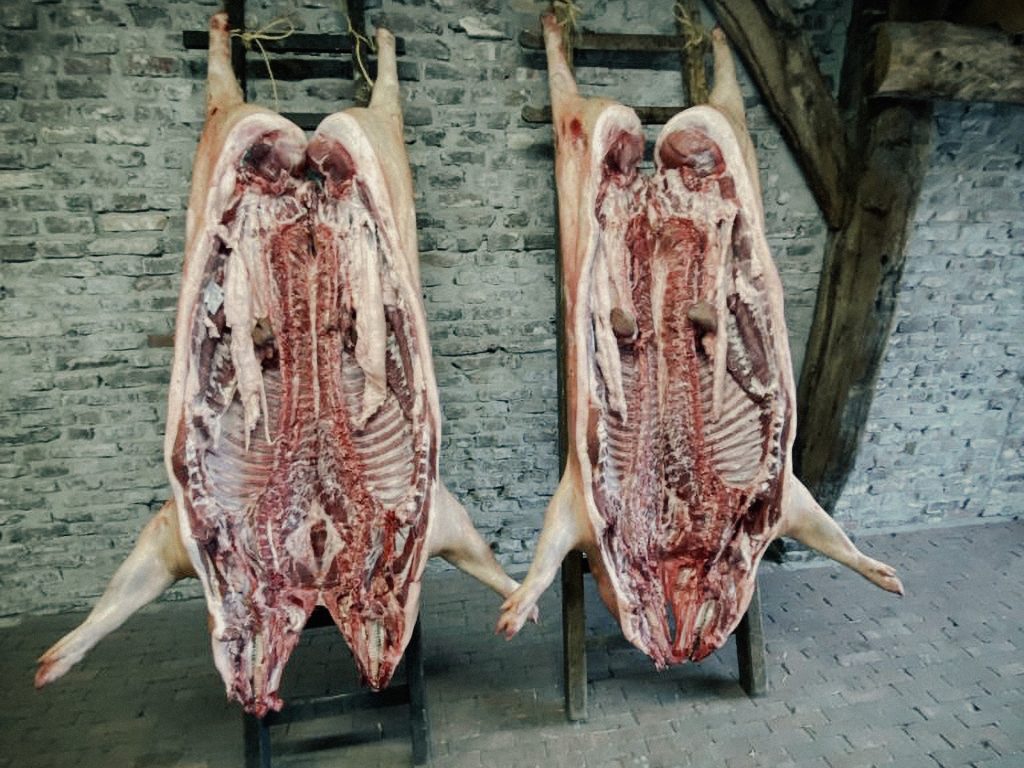
Traditional slaughter day
Experience the slaughter day tradition from the early 1900s at the Boerenbondsmuseum! Find out how the community used to come together for this important day. Taste historical dishes such as fresh sausage and beef mash!
-
2 November
-
11:00h-17:00h
-
Every year on the first Sunday of November, a special tradition comes to life at the Boerenbondsmuseum: the annual slaughter day. This day offers a unique glimpse into farm life in the early 1900s and honors an important agricultural tradition.
This tradition is continued at the Boerenbondsmuseum. During the slaughter day, not only are the methods and customs of yesteryear shown, but visitors also have the opportunity to taste historical dishes prepared with these ancient techniques. This gives visitors a taste of the past, often prepared according to family recipes that have been passed down through generations.
The slaughter day at the Boerenbondsmuseum is more than a reminder of how things once were; It is an active, educational experience that provides insight into the sustainability and community spirit of the past. It offers a window into a time when the rhythms of nature and hard work on the farm defined daily life. The annual slaughter day at the Boerenbondsmuseum is an opportunity not only to see history, but also to experience and taste it.
A traditional day of slaughter on a farm in the early 1900s
Traditionally, slaughter days were essential to farming communities in the early 20th century. It was the time to slaughter cattle and prepare meat for the winter months. These days were not only crucial for the food supply but also functioned as social events, bringing together the entire community to roll up their sleeves.
On a day of slaughter, nothing was wasted. After slaughter, every part of the animal was used. Meat was processed into consumer goods such as fresh sausages, mash and will. Fats were used for cooking and preservation, and even organs were transformed into nutritious dishes.




